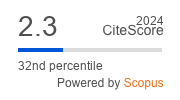THERMAL SCIENCE
International Scientific Journal
Authors of this Paper
External Links
STUDY ON SOUND INSULATION PROPERTIES OF FLAX FIBER REINFORCED POLYPROPYLENE MATRIX COMPOSITES
ABSTRACT
Fiber reinforced composites with fiber contents of 0%, 10%, 20%, 30%, and 40% were prepared using flax fiber as the raw material and polypropylene as the matrix. The effects of fiber content and surface treatment on the sound insulation of flax fiber reinforced composites were investigated by alkali treatment and coupling agent treatment. The results show that when the fiber content exceeds 10%, the sound insulation of the composite initially increases and then decreases with increasing voicing frequency. At the same intonation frequency, the lower the fiber content, the worse the sound insulation performance. When the fiber content exceeds 30%, the peak damping rate decreases. After surface treatment, the sound insulation performance of the composite was improved, and the sound insulation performance of the composite after coupling agent treatment was better than that of the composite after alkali treatment.
KEYWORDS
PAPER SUBMITTED: 2024-04-18
PAPER REVISED: 2024-06-20
PAPER ACCEPTED: 2024-06-25
PUBLISHED ONLINE: 2025-07-06
DOI REFERENCE: https://doi.org/10.2298/TSCI2503705Z
CITATION EXPORT: view in browser or download as text file
2025 Society of Thermal Engineers of Serbia. Published by the Vinča Institute of Nuclear Sciences, National Institute of the Republic of Serbia, Belgrade, Serbia. This article is an open access article distributed under the terms and conditions of the Creative Commons Attribution-NonCommercial-NoDerivs 4.0 International licence

